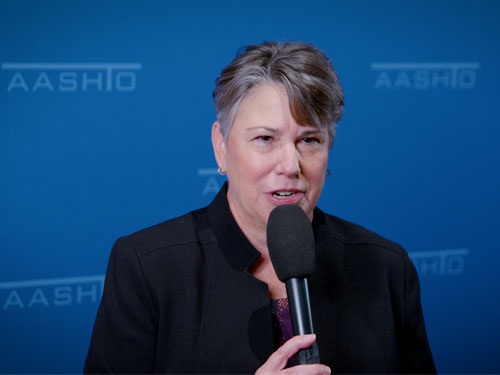A hearing held on April 27 by the House of Representatives Committee on Transportation and Infrastructure examined construction workforce issues within the surface transportation sector.
[Above photo by AASHTO]
That hearing – held by the House T&I Subcommittee on Highways and Transit – featured testimony from state department of transportation leaders from Colorado and North Carolina as well as from the Conference of Minority Transportation Officials or COMTO.

Shoshana Lew, executive director of the Colorado Department of Transportation, detailed the job creation efforts undertaken by her agency in relation to its Central 70 highway reconfiguration project.
“The economic benefits of the Central 70 Project are both significant and long lasting,” she explained in her testimony. “The project anticipated requiring an estimated 4,000 positions – from skilled craft workers to administrative support [jobs].”
As part of the agency’s contract with the Kiewit Meridiam Partner – the Central 70 project developer – over the estimated four and a half-year construction timeline requires them to hire 20 percent of its full-time employees from the local community.
Through “thoughtful collaboration” via a local labor hiring pilot program, Colorado DOT and its partners created a successful “bridge” workforce as part of its economic community development efforts.
“The alignment of training and job opportunities that help local residents in low-income neighborhoods to access training, high-quality jobs with connected career pathways, increases not only individual economic mobility but also the number of skilled workers to fulfill future project needs,” Lew noted.

Tunya Smith, director of the Office of Civil Rights for the North Carolina Department of Transportation, noted in her testimony that nearly two million jobs in North Carolina depend directly on the strength of the state’s transportation infrastructure.
As North Carolina focuses on ramping up transportation infrastructure, there is a pending workforce shortage,” she explained, as the average age of North Carolina construction trades workers is approximately 50 years old.
“The impact of the expected labor shortage is amplified by the fact that many potential workers find construction trades unattractive and challenging to enter,” Smith noted. “Now more than ever, programs that target and prepare non-traditional populations and laborers are needed.”
She said a greater investment in workforce development is necessary to realize the full potential of the IIJA.
“To achieve the best outcomes, we also recommend a review of Workforce Innovation and Opportunity Act in consideration of its reauthorization to determine if there are opportunities for amendments that are focused on funding for highway construction, and other transportation workforce and training programs,” Smith said.

April Rai, COMTO’s president and CEO, noted in her testimony that as the transportation sector has the “responsibility” of being “the great connector” for all people and goods all the time, it should reflect the “complex mosaic” of those they serve.
“We believe that commitment to inclusion across race, gender, age, religion, identity, and experience moves us forward every day,” she said. “To that end, we must be intentional about attracting professionals from diverse backgrounds to this industry.”
In a statement submitted to the subcommittee, the American Association of State Highway and Transportation Officials outlined some of the efforts it is undertaking to help state DOTs across the country deal with workforce recruitment and retention challenges.

“To assist the state DOTs with workforce management challenges, AASHTO is developing a new Subcommittee on Transportation Workforce Management within our Committee on Knowledge Management,” the organization said.
“This subcommittee will provide proven, effective strategies to navigate workforce management issues and become a community of practice for state DOTs on strategic workforce management,” AASHTO noted.
“[It] will address activities that enable comprehensive and intentional strategic workforce management, such assessing workforce and workplace diversity, equity, and inclusion, and assessing the capabilities and effectiveness of current the workforce and identifying competency gaps,” the group said.
The organization added that state DOTs face “many unique and complex” workforce issues and challenges, with different workforce and workplace demands specific to the state DOT community requiring strategies and approaches specific to the nature of their work.
“Through collaboration with one another and industry partners, along with the sharing of ideas, best practices resources and knowledge, state DOTs can lead the way in finding innovative solutions to the problems of today and creating the opportunities of tomorrow,” AASHTO said.
 Top Stories
Top Stories
USDOT Makes $1.5B Worth of BUILD Grants Available
December 19, 2025 Top Stories
Top Stories

